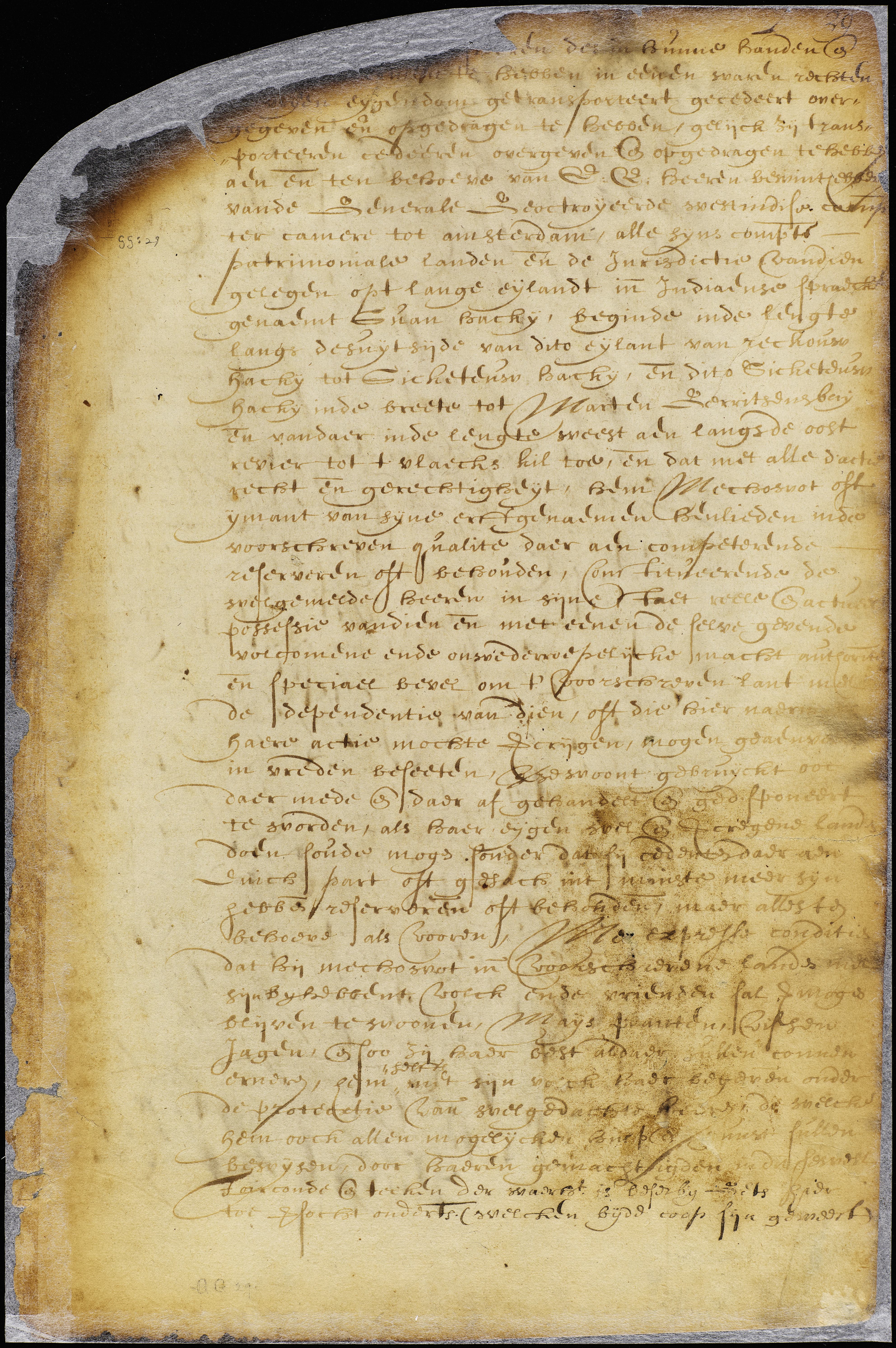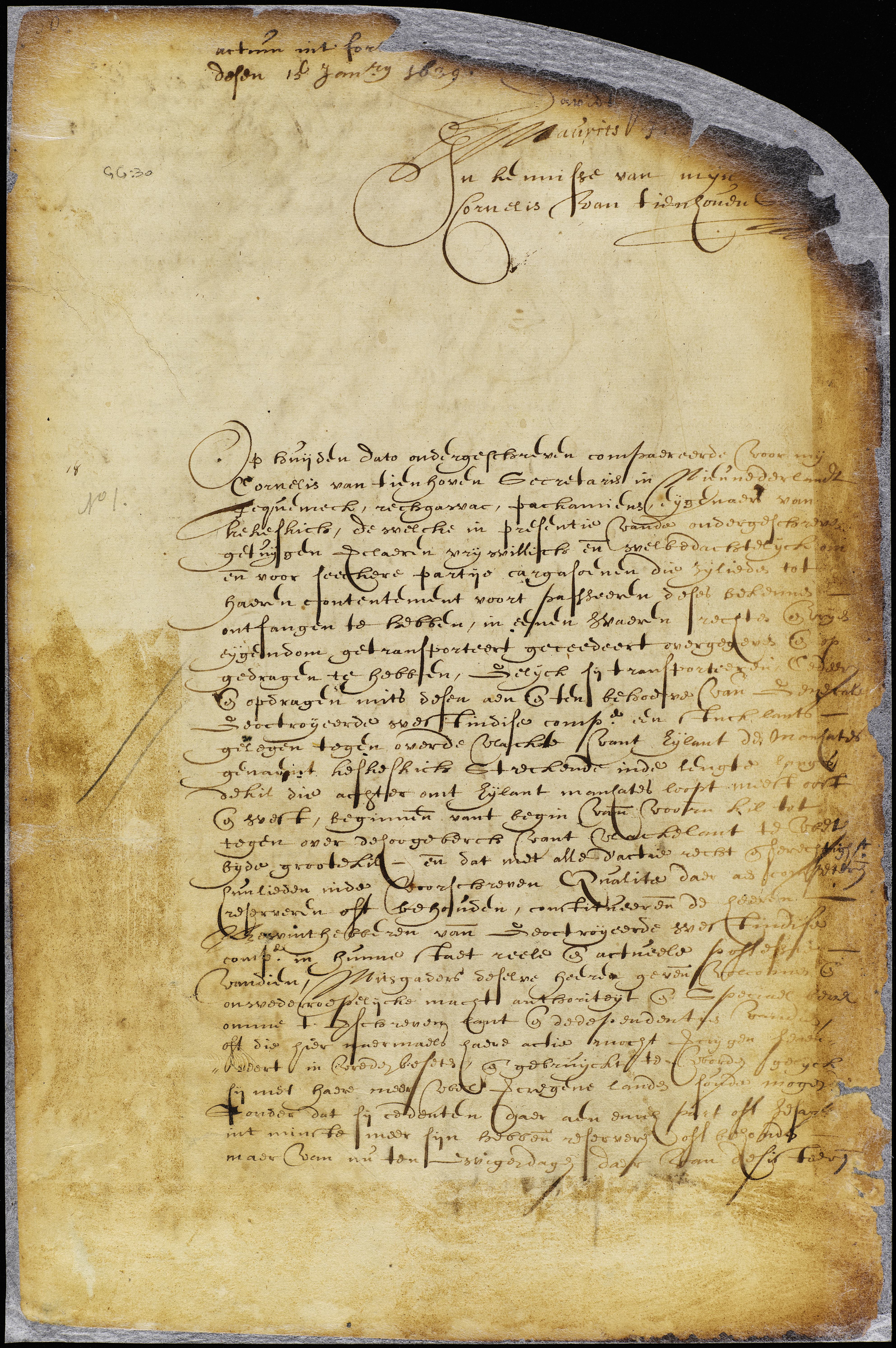Holding Institution
Document ID
NYSA_A1880-78_VGG_0028
Description
Indian deed from the chief of Marossepinck, Sintsinck, otherwise called Schout's bay, of a tract of land on Long Island, in length along the S. side of that island from Reckouwhacky to Sicketeuwhacky, inclusive, and in breadth to Martin Gerritsen's bay, and thence in length west along the East river to the Vlaeck's kil (Queens county).
Document Date
1639-01-15
Document Date (Date Type)
1639-01-15
Document Type
Full Resolution Image



Related Ancestors (Unlinked)
Piscamoc, his cousin, Wattewochkouw, Kachpohor, Ketachkwawars, co-owners of the aforesaid land
Search Terms
Not sure if property type should be have a designation as "Indian deed" - Hi Nitin - This is not a property type, but rather a document type. There were deeds and also Indian Deeds. The problem here is what to call the tribe's entity role. Were they the lessor? and DWIC the lessee? Or is this really a sale transaction. It is not clear. I am leaving this unfinished for now so we can review again. Toya 4-25-2021

